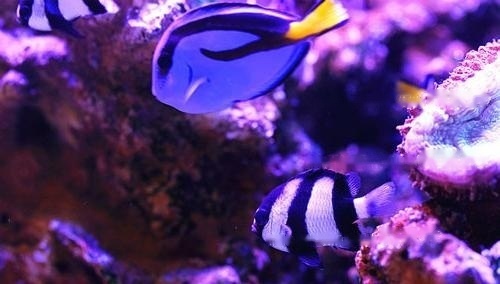I believe there are many friends who have had such experiences. fish bought in the supermarket lived well in the supermarket, but died a few days after being raised at home, or the fish kept in the fish tank at home were I liked it very much, but died inexplicably after a period of time? Because I didn’t know how to prevent fish diseases, I often let my favorite things die. The following small series will give you a few tips on how to prevent ornamental fish diseases. Simple and practical!

1. Pool (tank) soaking and disinfection For newly built fish ponds or newly purchased fish tanks, they must be carefully cleaned before use, and must be soaked in water for several days. , perform annealing. In particular, fish ponds newly built with cement contain alkaline substances that are harmful to ornamental fish and must be removed. The method is as follows: 1. Dip the new tank with an aqueous solution of 12 grams of phosphoric acid dissolved in 50 liters of water for 1 to 2 days to achieve the purpose of removing alkali. Then rinse it with salt water or potassium permanganate solution, fill it with green water for about a week, replace it with new water and a small amount of old water, and put a few second-order fish to try it out first, and then put the ornamental fish on it. ② Dissolve alum in the pool water, after 2 to 3 days, the purpose of alkali removal can be achieved, and then replaced with new water, it can be used. For fish ponds (tanks) that are not used for a long time, they should be disinfected and soaked with salt water or potassium permanganate solution before use.
2. It can be said that most of the diseases of ornamental fish are caused by improper feeding and management. Therefore, strengthening feeding management, improving water environment, and careful operation are important measures to prevent diseases. ①To achieve three determinations, one training feeding quality: fresh and clean bait, do not feed rotten and deteriorated bait. Quantitative: According to different seasons, weather changes, fish body size, appetite response and water quality, appropriate bait is given, and the principle of rather less than more is mastered. Timing: There must be a certain time for baiting, usually 7-10 am. However, it can be appropriately advanced in summer and postponed in winter. Pay attention to eating less at noon, and avoid eating in the evening. Training: When throwing bait every day, you can use light tapping on the water surface or other sounds for a long time of training, so that the sick fish that cannot come to grab food can be found in time. ②Keep the water clean The water surface of the fish pond (tank) is in direct contact with the air. If the water surface is densely covered with dust or oil slick, this will not only prevent the oxygen in the air from dissolving in the water, but also the dust and dirt will easily accumulate on the fish gills. Not good for fish breathing. In addition, many fish excrement and bottom dirt will also float to the surface after sun exposure, preventing oxygen from dissolving into the water. Therefore, the water surface should be cleaned before 4 to 5 pm every day, which is very beneficial to the water quality in the purification pool (tank). Absorbing the fish manure, residual bait, sediment, etc. at the bottom of the pool (tank) every day can reduce the harmful gases (such as carbon dioxide and hydrogen sulfide) released by the decomposition and decomposition in the water, prevent the pool water from being too acidic, and also prevent some Parasites and bacteria harm ornamental fish. It is also one of the important links in the prevention of fish diseases to carefully rinse the red worms recovered before feeding them. ⑧ Careful operation No matter when changing the water or catching fish, the action should be light. When ornamental fish are temporarily raised in cages or basins, do not squeeze too much to avoid scratching the fish, thereby reducing the chance of bacteria and parasites invading and reducing the incidence of fish diseases.
3. Good drug prevention In the season of fish disease, in addition to the above preventive measures, it is very necessary to use some drug prevention. Here is a brief introduction: ①Fish body disinfection During the fish disease epidemic season, every time the water is completely changed in combination with the fish pond (tank), first use 1 mg/L potassium permanganate solution, and use 2 9/6~ 3% salt water, and then 2-3 mg/L nitrofurazone liquid is used for cyclic rotation and immersion of ornamental fish every 10 days. The bathing time can be flexibly increased or decreased depending on the size and health of the fish, generally no more than 10 minutes. This can kill the bacteria and parasites on the fish, and receive a better preventive effect. At the same time, in the season of fish disease outbreaks, a small amount of salt (0.1% to 0.5%) can be placed in the fish pond (tank), which has a great effect on controlling and reducing the incidence. In particular, the control effect on water cholera and Myxococcus is more significant. ②Tool disinfection Daily tools such as red worm pockets, fishing nets, basins, spoons, etc. need to be frequently exposed to the sun and regularly soaked in potassium permanganate, trichlorfon solution or concentrated salt boiling water for disinfection. In particular, utensils that come into contact with sick fish should be strictly disinfected and dedicated. In short, the disease prevention and treatment of ornamental fish is the same as the disease prevention and treatment of human beings.
![[Dog Training 5] The training method of pet dog dining etiquette](/static/img/12192/12192_1.jpg)




